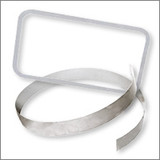When you're hauling long miles, your sleeper isn’t just a cab extension, it’s your home away from home. That’s why we carry a full lineup of aftermarket sleeper parts built to keep your Peterbilt 388 comfortable, functional, and road ready.
Fully Personalize Your Sleeper
From exterior panels to interior upgrades, these parts help you repair, upgrade, or customize your sleeper the way you want it.
What you’ll find in this category:
- Sleeper door panels, vents, and trim: Keep airflow smooth and style sharp
- Interior panels and insulation: Improve comfort and reduce noise
- AC filters and HVAC parts: Stay cool and clean during long-haul downtime
- Pete 388 mirrors, sleeper windows, and windshield accessories: Boost visibility and freshen up your view
- Replacement seals and weatherstripping: Keep the sleeper tight and dry
Whether you're
restoring a worn-out Peterbilt 388 day cab or adding modern touches to your setup, these aftermarket parts are built to fit your Peterbilt 388 and take on the miles ahead.
Don’t forget—many of these parts also work for the Peterbilt 389 and 379, making it easy to keep high-volume models on the road.

 Peterbilt 388 Sleeper Rear Acc.
Peterbilt 388 Sleeper Rear Acc.
 Peterbilt 388 Sleeper Repair Parts
Peterbilt 388 Sleeper Repair Parts
 Peterbilt 388 Sleeper Roof Acc.
Peterbilt 388 Sleeper Roof Acc.
 Peterbilt 388 Sleeper Side Acc.
Peterbilt 388 Sleeper Side Acc.



